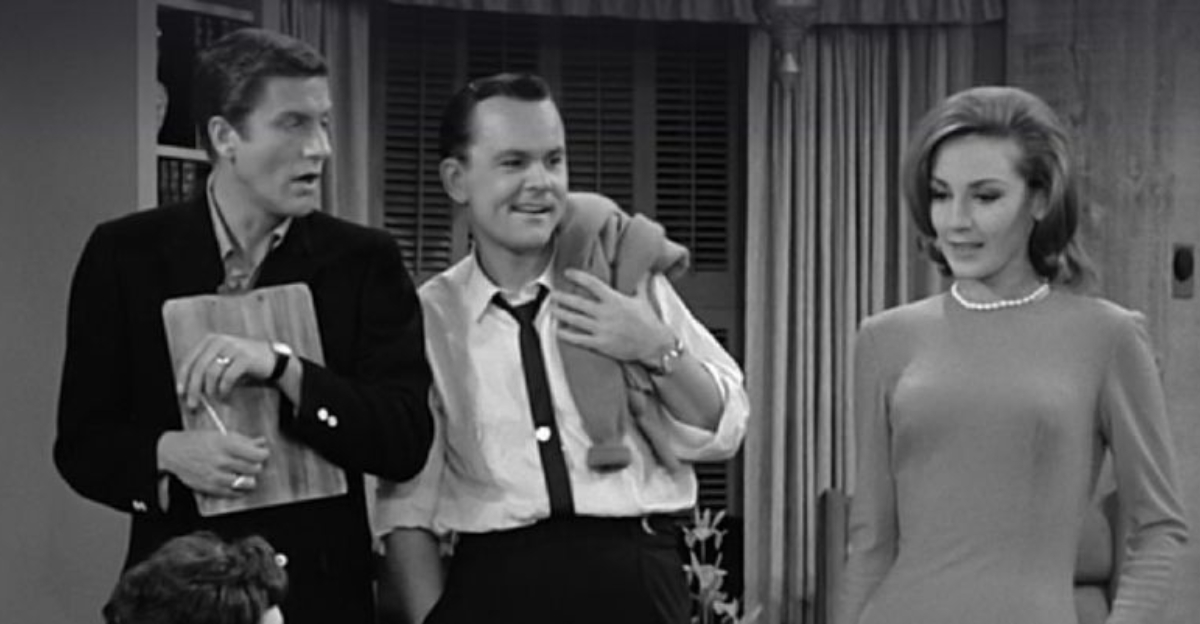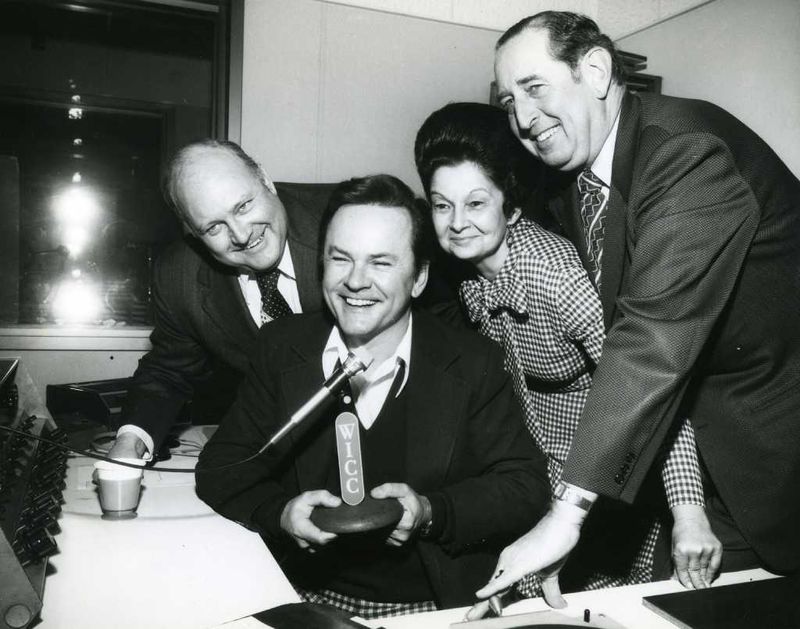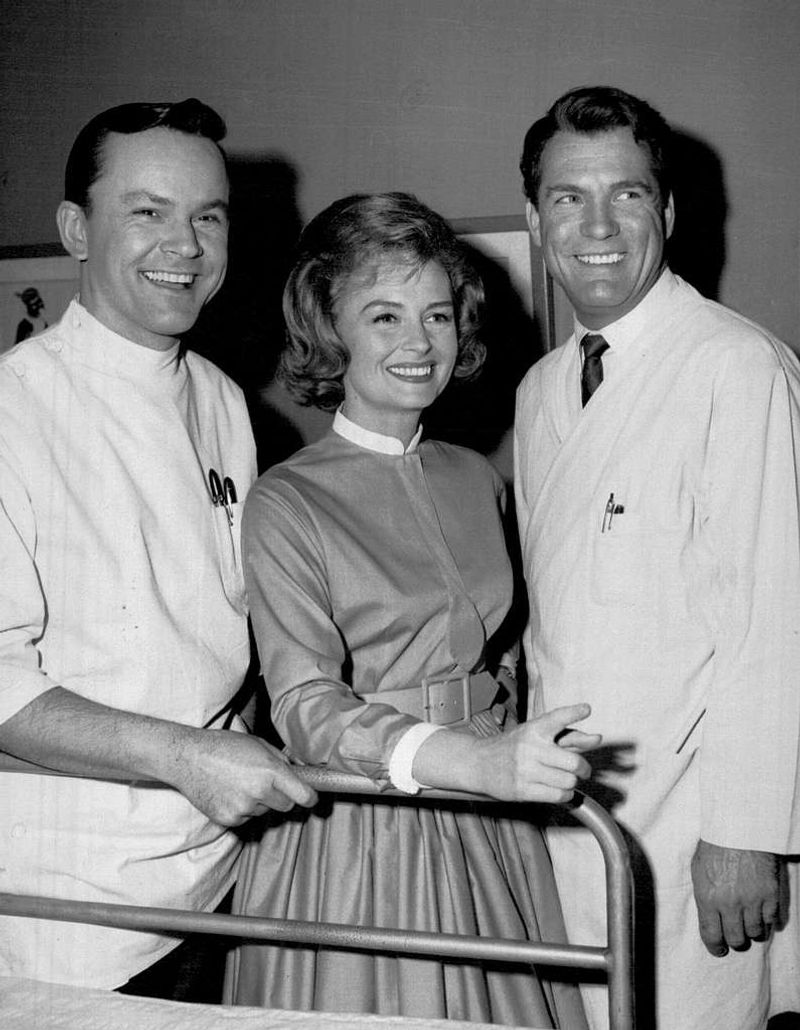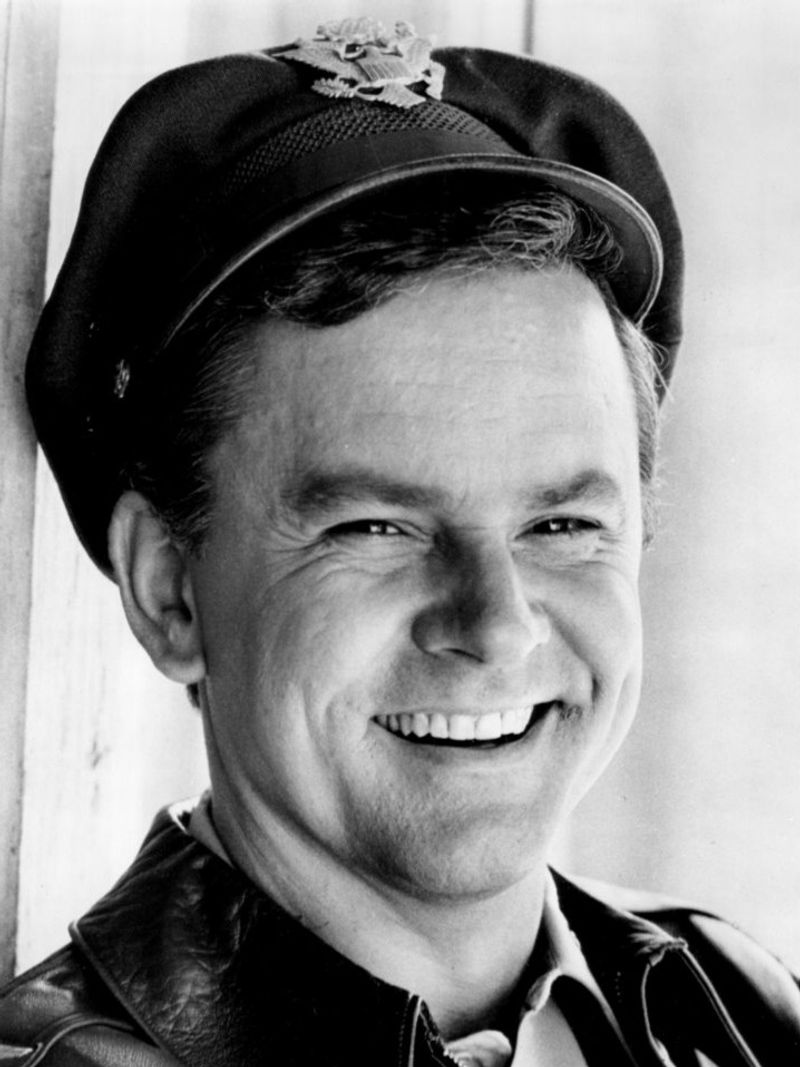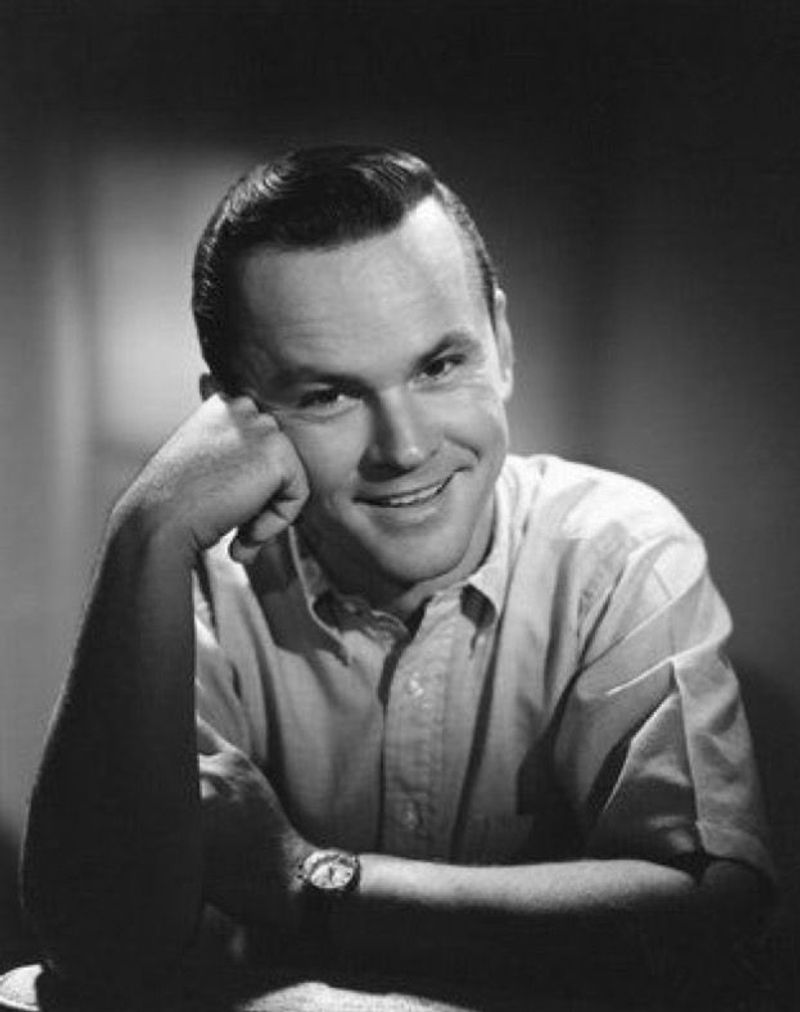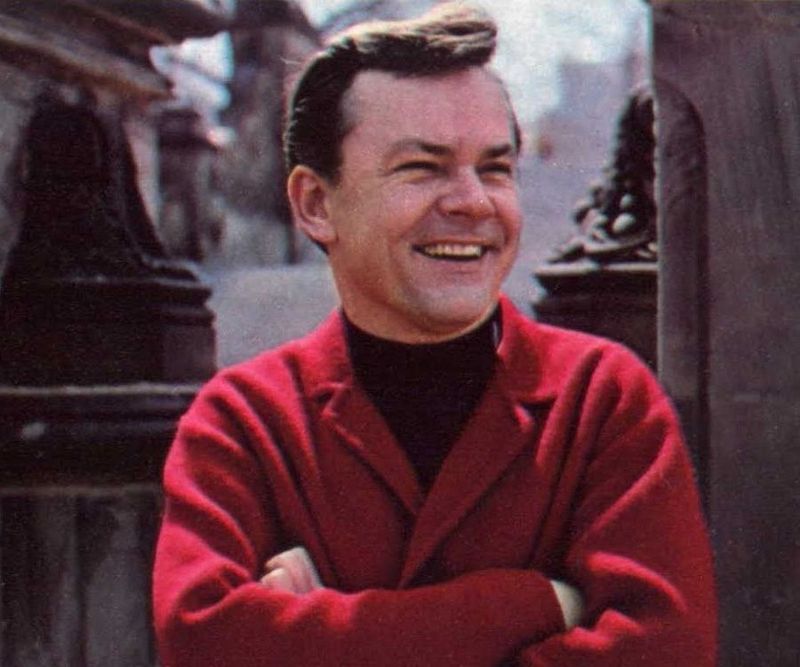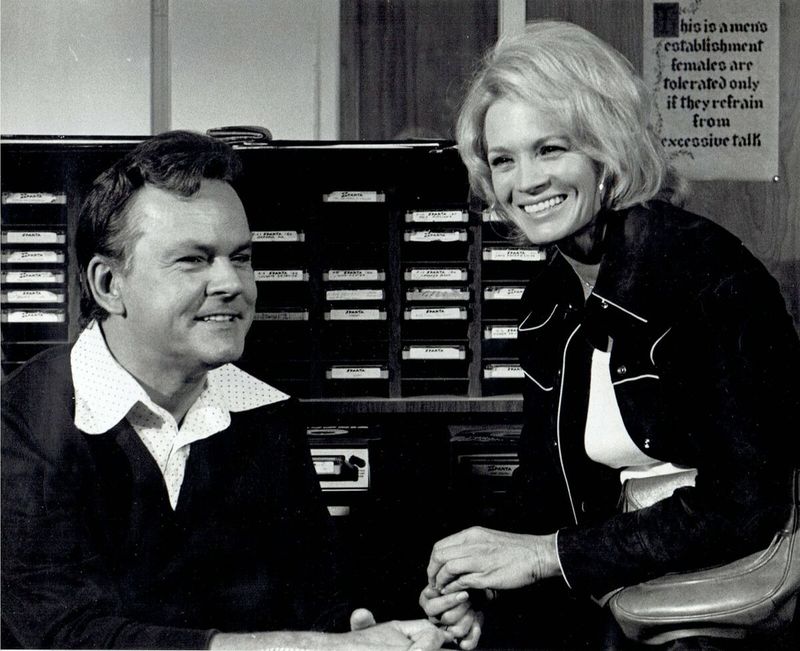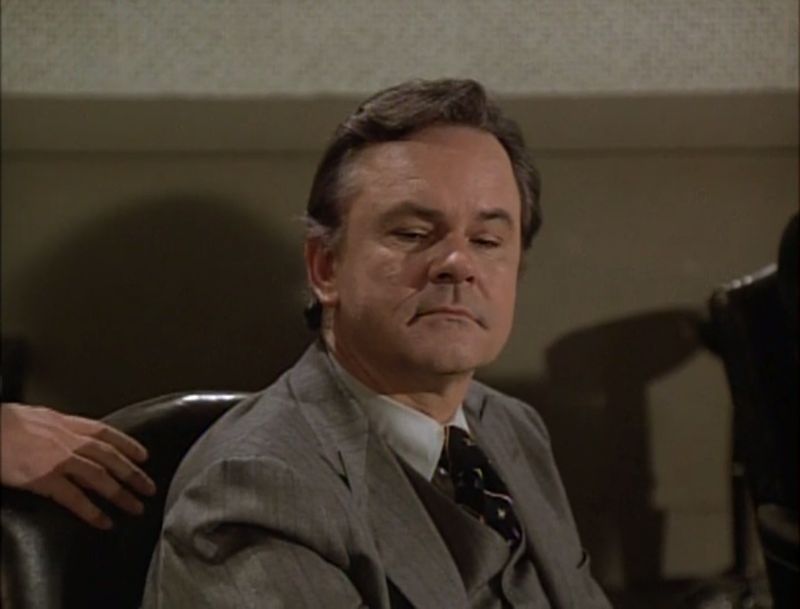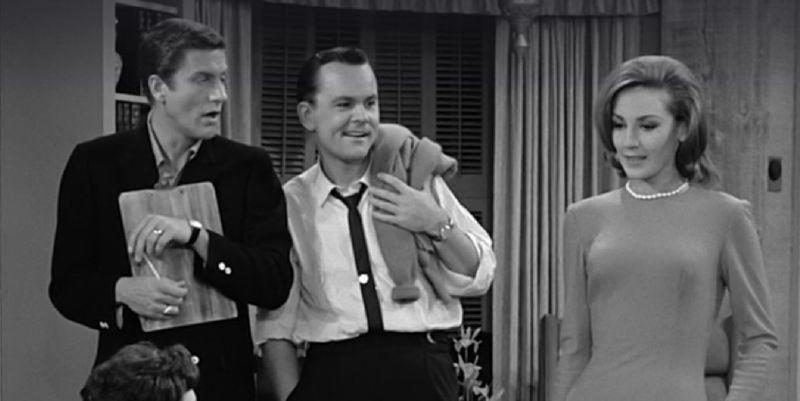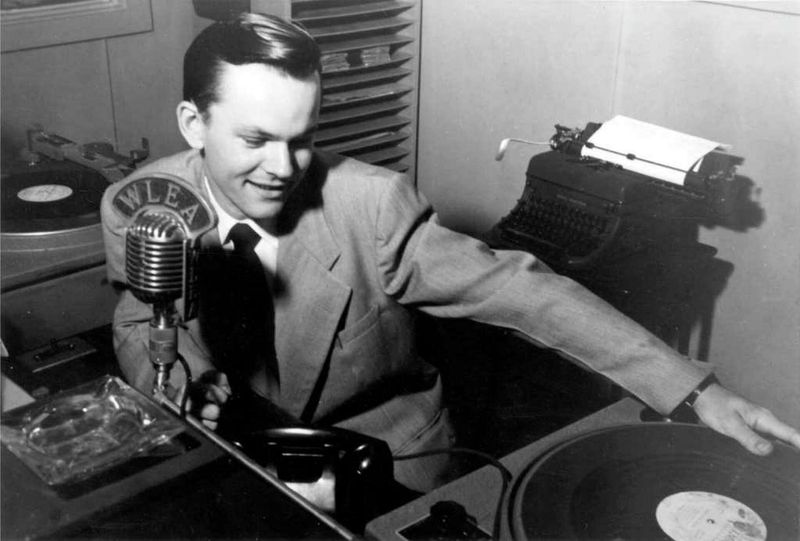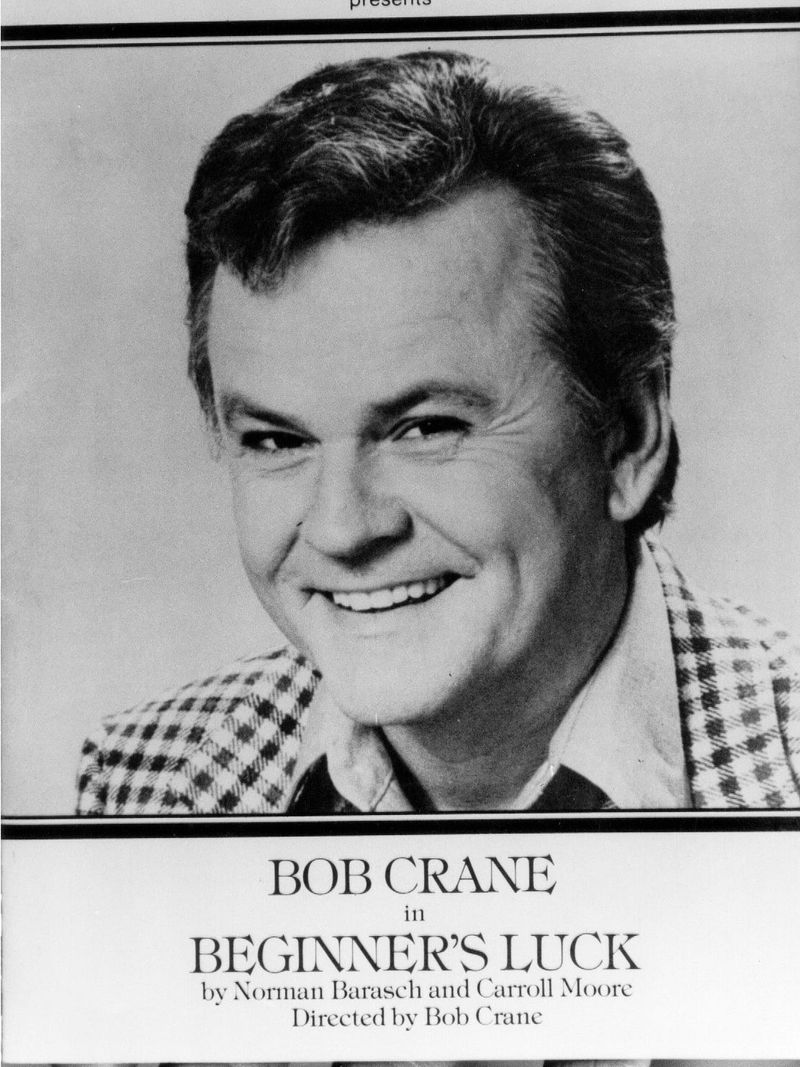Before his shocking 1978 murder, Bob Crane was more than just Colonel Hogan from the hit sitcom Hogan’s Heroes. His career spanned radio, television, and stage, showcasing talents many fans never fully appreciated.
While his personal life and tragic death often overshadow his professional accomplishments, Crane built an impressive resume across multiple entertainment formats that deserves recognition.
1. Radio King of Los Angeles
Long before television fame, Crane dominated morning airwaves at KNX-CBS Los Angeles throughout the 1950s. His quick wit and remarkable talent for voices and sound effects made him a household name in Southern California.
Celebrities regularly appeared on his show, with Crane conducting interviews that blended humor and insight. He even incorporated drum playing into broadcasts, showcasing the musical talent that remained a lifelong passion.
This radio stardom served as his springboard to television, catching the eye of producers who recognized his natural charisma translated perfectly to the visual medium.
2. The Donna Reed Show Neighbor
Crane’s recurring role as Dr. Dave Kelsey on The Donna Reed Show marked his first significant television break. As the Stone family’s charming next-door neighbor from 1963-1965, he perfected his trademark comedic timing.
The character allowed Crane to develop the friendly, quick-witted persona that would become his hallmark. His chemistry with the cast proved so strong that producers expanded his initially small role into a recurring character.
Many television historians point to this performance as the direct stepping stone that convinced CBS executives he could carry his own series.
3. Twilight Zone’s Haunting Appearance
Few fans remember Crane’s dramatic turn in the 1961 Twilight Zone episode “Static.” Playing a character named Rawlins, he demonstrated acting range that surprised audiences accustomed to his comedic work.
The episode explores themes of nostalgia and time, with Crane delivering a performance far removed from his usual lighthearted roles. His character appears in scenes featuring an old radio that mysteriously broadcasts programs from the past.
This brief foray into the anthology series showcased Crane’s potential for more serious roles, a path his career might have taken had Hogan’s Heroes not defined his trajectory.
4. Alfred Hitchcock’s Menacing Guest
Crane stepped into darker territory with his appearance in Alfred Hitchcock Presents. Cast as Andy in the episode “Memo from Purgatory,” he revealed a capability for portraying characters with unsettling undercurrents.
The episode’s noir-like atmosphere allowed Crane to shed his wholesome image temporarily. Working under the Hitchcock banner gave him credibility among critics who previously dismissed him as merely a light comedian.
Interestingly, this performance came shortly before his Hogan’s Heroes stardom, making it one of the last times audiences would see him in a non-comedic role for many years.
5. Golden Age Anthology Appearances
Before landing steady roles, Crane made several appearances on G.E. Theater during television’s golden age of anthology programming. These early performances helped him transition from radio to television, showcasing his adaptability across different characters.
Hosted by Ronald Reagan, the prestigious series featured top Hollywood talent each week. Crane’s appearances, though brief, put him in the company of established stars and introduced him to influential industry figures.
The experience proved invaluable, teaching him television techniques that differed significantly from radio performance and preparing him for more substantial roles to come.
6. Bowling For Television Fame
After Hogan’s Heroes ended, Crane maintained visibility through frequent appearances on Celebrity Bowling. These casual competitions revealed his competitive spirit and natural charm outside scripted performances.
Viewers enjoyed seeing the off-duty actor joking with fellow celebrities while displaying surprising bowling skills. The show’s relaxed format allowed Crane’s unscripted personality to shine through, reinforcing his likability with fans.
These appearances kept him in the public eye during a transitional career period when finding substantial acting roles proved challenging. His ease in front of cameras even in this unconventional format demonstrated why he had become such a television favorite.
7. Short-Lived Sitcom Comeback
1975 brought The Bob Crane Show, his ambitious attempt to recapture sitcom success. Portraying Bob Wilcox, a successful insurance executive who abandons his career to attend medical school, Crane hoped to establish himself beyond Colonel Hogan.
NBC heavily promoted the series, betting on Crane’s established fanbase. Critics noted the premise offered more character depth than his previous work, suggesting potential for growth if given time to develop.
Unfortunately, viewers didn’t connect with the concept, and poor ratings led to cancellation after just 13 episodes. This professional disappointment marked a turning point in Crane’s career trajectory, forcing him toward less prestigious opportunities.
8. Love, American Style’s Romantic Vignettes
Crane appeared in multiple episodes of the romance-comedy anthology series Love, American Style during the early 1970s. The show’s format of unconnected romantic vignettes allowed him to play various characters, from hopeless romantics to sophisticated bachelors.
These appearances showcased his versatility within comedy while keeping him visible to television audiences between major projects. The lighthearted nature of the show aligned perfectly with his established screen persona.
For many actors of the era, the popular anthology served as a television staple that maintained their industry presence. Crane used these guest spots effectively to remind viewers and producers of his comedic capabilities.
9. Crime Drama Guest Star
Seeking to break typecasting, Crane appeared in a 1976 episode of Police Woman starring Angie Dickinson. This dramatic role represented his deliberate effort to expand beyond comedy as television trends shifted toward grittier content.
The popular crime series featured him in a surprisingly nuanced performance that hinted at dramatic potential rarely utilized throughout his career. Working alongside respected dramatic actors challenged him to adapt his performance style.
Coming late in his professional life, this guest appearance suggests an alternate career path that might have developed had he lived longer. Critics noted his effective work in the episode, proving he could handle material beyond sitcoms.
10. Mystery Series Detective
Mystery fans might recall Crane’s appearance in the detective series Ellery Queen in 1975. The cerebral whodunit format provided him an opportunity to play against type in a genre gaining popularity during that era.
Set in the 1940s, the stylish series featured period costumes and complex mysteries that attracted quality guest stars. Crane embraced the chance to portray a character within the show’s distinctive noir-influenced atmosphere.
This performance demonstrated his understanding that television was evolving beyond the sitcom format that made him famous. His willingness to adapt to changing entertainment trends showed professional awareness, even as his personal life grew increasingly troubled.
11. Comedy Connections Beyond Hogan
Though never appearing on The Dick Van Dyke Show, Crane’s professional orbit frequently intersected with Van Dyke’s through industry connections and similar career trajectories. Both men established themselves as physical comedians with exceptional timing and likable personas.
Industry insiders often compared their performing styles and career paths. Both transitioned from other media to television sitcoms that defined their public images, creating characters remembered decades after their shows ended.
These parallels made them natural comparisons in entertainment columns of the era. Crane reportedly admired Van Dyke’s versatility and aspired to similar career longevity across different entertainment formats.
12. Voice Virtuoso Behind the Microphone
Before television cameras discovered him, Crane earned the nickname “Man of a Thousand Voices” during his radio career. His exceptional vocal talents allowed him to create distinctive characters and impressions that delighted morning commuters.
Radio historians consider his KNX morning show revolutionary for its entertainment-focused approach. Rather than simply playing records, Crane created elaborate audio sketches and character-driven segments that transformed morning radio formats.
This foundation in audio performance influenced his later television work, particularly his vocal delivery and timing. Many of his radio techniques transferred seamlessly to visual comedy, explaining why he adapted so naturally to television.
13. Final Curtain Call on Stage
Crane’s final performance chapter unfolded in dinner theaters across America in the mid-1970s. Starring in light comedies like Beginner’s Luck and Catch Me If You Can, he found enthusiastic audiences in smaller venues when television roles became scarce.
These productions allowed him to leverage his recognizable name while experiencing the immediate audience feedback missing from television work. The touring schedule kept him professionally active during a period when Hollywood opportunities had diminished.
Tragically, these dinner theater connections introduced him to John Carpenter, who became both his friend and eventually the prime suspect in his unsolved murder. These final performances thus became inextricably linked to the circumstances surrounding his death.
